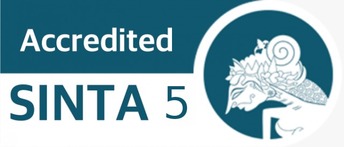The Effect of Realistic Mathematics Education Learning Model on Students™ Triarchic Intelligence
DOI:
https://doi.org/10.24114/paradikma.v16i1.43414Abstract
This study aims to analyze the effect of the Realistic Mathematics Education (RME) learning model on students' triarchic intelligence. This study is a quasi-experiment with a pretest-posttest control design. The instruments used in this study were: (1) validation sheets; and (2) students' triarchic intelligence tests. The results of this study are: (1) the students' triarchic intelligence scores taught with the RME learning model are in the high category; (2) there is a significant difference on the students' triarchic intelligence scores taught by the RME learning model and direct learning; (3) the students' triarchic intelligence scores taught by the RME learning model is higer than the students' triarchic intelligence scores taught by direct learning; and (4) the implementation of the RME learning model can increase students' triarchic intelligence.Keywords: Quasi-Experiment, Learning Model, RME, Triarchic IntelligenceReferences
Anwar, B. & Mumthas, N. S. 2014. Taking Triarchic Teaching to Classrooms: Giving Everybody a Fair Chance. International Journal of Advanced Research, 2(5): 455“458.
Bishop, A. J. 1991. Mathematical Enculturation: A Cultural Perspektive on Mathematics Education. Dordrecht: Kluwer Academic Publishers.
Bozkurt, G. 2017. Social Constructivism: Does it Succeed in Reconciling Individual Cognition with Social Teaching and Learning Practices in Mathematics?. Journal of Education and Practice, 8(3).
Budinski, N. & Milinkovic, D. 2017. Transition from Realistic to Real World Problems with The Use of Technology in Elementary Mathematical Education. Acta Didactica Napocensia, 10(1).
Carpenter, J. & Gorg, S. 2000. Principles and Standards for School Mathematics. USA: NCTM, Inc.
Davidson, J. E. & Kemp, I. A.. 2011. Contemporary Models of Intelligence. In R. J. Sternberg & S. B. Kaufman (Eds). The Cambridge Handbook of Intelligence (pp. 58 “ 82). United State of America: Cambridge University Press.
Ernest, P. 1991. The Philosophy of Mathematics Education. Taylor & Francis Group: Routledge Falmer.
Farsani, S. G.; Heidari, K.; Pourbafrani, M.; Jafari, Z.; & Farsani, A. G. 2016. A Case Study of the Role of Intelligence in Learning and Success. International Academic Journal of Humanities, 3(4): 1 “ 12.
Gillies, R. M. 2014. Cooperative Learning: Developments in Research. IJEP “ International Journal of Educational Psychology, 3(2): 125-140.
Glasersfeld, E. von. 1995. Radical Constructivism: A Way of Knowing and Learning. London: Taylor & Francis.
Gravemeijer, K. 1994. Developing Realistic Mathematics Education. Utrecht: Institute.
Hake, R. R. 2008. Design-Based Research in Physics Education: A Review. In A. E. Kelly; R. A. Lesh; & J. Y. Baek. Handbook of Design Research Methods in Education: Innovations in Science, Technology, Engineering, and Mathematics Learning and Teaching (pp. 493“508). New York: Routledge, Taylor & Francis.
Hasratuddin. 2017. Improving Critical Thinking and Emotional Intelligence Capabilities of Secondary School Students Through Realistic Mathematics Education Approach. International Journal of Innovation in Science and Mathematics, 5(1).
Heuvel-Panhuizen, M. van den. 2003. The Didactical Use of Models in Realistic Mathematics Education: An Example From a Longitudinal Trajectory on Percentage. Educational Studies in Mathematics, 54: 9“35.
Heuvel-Panhuizen, M. van den & Drijvers, P. 2014. Realistic Mathematics Education. In S. Lerman (Ed). 2014. Encyclopedia of Mathematics Education (pp. 521“525). Dordrecht: Springer Science+Business Media.
Hidayat, R. & Iksan, Z. H. 2015. The Effect of Realistic Mathematic Education on Students™ Conceptual Understanding of Linear Progamming. Creative Education, 6: 438-2445.
Jupri, A. & Drijvers, P. 2016. Student Difficulties in Mathematizing Word Problems in Algebra. Eurasia Journal of Mathematics, Science & Technology Education, 12(9): 2481-2502.
Laal, M.; Geranpaye, L.; & Daemi, M. 2013. Individual Accountability in Collaborative Learning. Procedia “ Social and Behavioral Sciences, 93: 286“289.
Momani, R. T. H. & Gharaibeh, S. A. 2017. Investigating the Construct Validity of Sternberg™s Triarchic Abilities Test Level-H (Arabic Version). International Journal of Advanced and Applied Sciences, 4(11): 28-34.
Mullis, I. V. S. & Martin, M. O. (Eds). 2013. TIMSS 2015 Assessment Frameworks. United States: International Association for the Evaluation of Educational Achievement (IEA).
Nelissen, J. & Tonic, W. 1993. Learning and Thought Processes in Realistic Mathematics Instruction. Curriculum and Teaching, 8(1).
OECD. 2016. PISA 2015: Assessment and Analytical Framework: Science, Reading, Mathematic and Financial Literacy. Paris: PISA, OECD Publishing.
Presmeg, N. 2003. Creativity, Mathematizing, and Didactizing: Leen Streefland™swork Continues. Educational Studies in Mathematics, 54: 127“137.
Shabnam. 2014. Culture and Intelligence. The International Journal of Indian Psychology, 2(1).
Slavin, R. E. 2008. Cooperative Learning, Success for All, and Evidence-Based Reform in Education. Education & Didactique, 2(2): 151“159.
Slavin, R. E. 2014. Cooperative Learning and Academic Achievement: Why Does Groupwork Work?. anales de psicologÃa, 30(3): 785-791.
Sternberg, R. J. 1997. Successful Intelligence: How Practical and Creative Intelligence Determine Success in Life. New York: Plume.
Sternberg, R. J. 1999. Successful Intelligence: finding a balance. New York: Cambridge University Press. Trends in Cognitive Sciences, 3(11).
Sternberg, R. J. 2005. The Theory of Successful Intelligence. Interamerican Journal of Psychology, 39(2): 189“202.
Surya, E. & Syahputra, E. 2017. Improving High “ Level Thinking Skills by Development of Learning PBL Approach on the Learning Mathematics for Senior High School Students. International Education Studies, 10(8).
Widjaja, Y. B. & Heck, A. 2003. How a Realistic Mathematics Education Approach and Microcomputer “ Based Laboratory Worked in Lessons on Graphing at an Indonesian Junior High School. Journal of Science and Mathematics Education in Southeast Asia, 26(2): 1“51.







